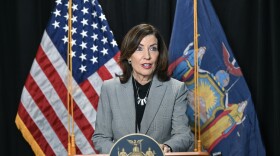Now that COVID-19 cases are continuing, despite increased vaccination rates, many are wondering if this pandemic will ever end or will we just learn to live with the virus.
Syracuse University epidemiologist, David Larsen, said he thinks our community is leaning toward the latter.
“I think the decision has been made not to eliminate it, that we're going to accept it,” said Larsen.
Harvard public health professor, Joseph Allen, said in a recent Syracuse University webinar that the key to managing the virus is now looking at hospital capacities rather than positivity rates.
“I think in high vaccinated places the better match or metrics of community risk then becomes the hospitalization and death indicators,” said Allen.
Larsen agreed–noting that the more inundated hospitals are with covid patients, the less likely they are to be able to care for patients with other medical needs.
“I'm not as worried about COVID as I am about these crisis care standards and the rationing of care,” said Larsen.
As of last Friday, only one-third of hospital beds were available across New York state. In central New York, that number is only 25%.
Another metric the state is now watching is the severity of infection or the rate of hospitalization per 100,000. The statewide average for this is 1.46. In central New York, that number is up to 2.63, and in North Country, it’s at a whopping 3.27.
So, if we learn to live with this virus, what does the end of the pandemic look like–if there is one?
“What does the end game of the pandemic look like,” said Larsen. “In my opinion, it looks like watching hospital capacity, and perhaps giving public health advisories as hospital capacity increases.”








